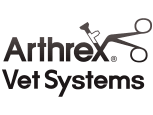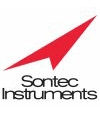Equine Odontoclastic Tooth Resorption and Hypercementosis (EOTRH) is a painful dental condition that is relatively common among older horses (15 years and older). The dental disease is progressive and characterized by two abnormal processes affecting the teeth: 1) resorption/destruction of the tooth structure, and 2) growth of irregular cementum of the tooth to try to stabilize the affected teeth. The incisors and occasionally the canine teeth are primarily affected, causing pain, inflammation, and eventual tooth loss.
While the exact cause of EOTRH remains unclear, it is believed to involve a combination of genetic predisposition, chronic inflammation, and mechanical stress on the teeth. EOTRH is most commonly seen in older horses; however, it likely progresses slowly with potential for disease to start in younger horses. Certain horse breeds, such as Warmbloods, Thoroughbreds, and draft breeds, tend to have a higher prevalence of EOTRH, suggesting a genetic predisposition. Chronic inflammation of the periodontal tissues surrounding the teeth is associated with poor dental hygiene, tooth misalignment, or traumatic injury and may contribute to EOTRH. Mechanical stress on the incisors, such as excessive biting forces, abnormal wear patterns, or repetitive trauma from cribbing and chewing on hard objects, may exacerbate the development of EOTRH.
The clinical presentation of EOTRH can vary depending on the severity and stage of the disease, but common signs and symptoms may include:
Tooth Discoloration: Affected teeth may exhibit discoloration, ranging from yellowish-brown to reddish-brown, due to the presence of hypercementosis, gingival inflammation, or secondary infection. Discoloration may be localized to specific areas of the tooth or involve the entire crown.
Gingival Inflammation and Swelling: Gingival inflammation and swelling may occur around the affected teeth, manifesting as redness, heat, pain, and soft tissue enlargement. Ulcerations and draining tracts may appear around affected teeth, or the base of the tooth may appear bulbous due to the buildup of cementum.
Tooth Mobility and Fractures: As EOTRH progresses, affected teeth may become mobile (loose) due to loss of periodontal support and structural integrity. Tooth mobility can progress to significant displacement of the affected tooth, and fractures or chips may occur along the edges of affected incisors.
Oral Discomfort and Pain: Horses with EOTRH may exhibit signs of oral discomfort, such as reluctance to eat, dropping feed, quidding (dropping partially chewed food), or displaying abnormal chewing patterns. Horses may not want to bite down on carrots or hard treats, and can have difficulty grazing. Pain may be exacerbated by contact with the bit, pressure from the bridle or halter, or manipulation of the affected teeth during dental examination.
Your veterinarian will start by performing a dental examination and will likely perform imaging to confirm the diagnosis.
Dental Examination: A thorough oral examination includes visual inspection, palpation of the teeth and gingiva, and assessment of dental occlusion and wear patterns. Dental probing may be performed to assess tooth mobility, detect periodontal pockets, or identify areas of resorptive lesions and hypercementosis.
Radiographs (X-rays): Radiographic imaging of the incisors and canines is essential for evaluating the extent of dental disease, visualizing resorptive lesions, assessing the integrity of tooth roots, and identifying secondary complications such as periapical infection or bone loss. Dental radiographs help guide treatment planning and monitor disease progression over time.
Histopathology: In cases where the diagnosis is uncertain or additional information is needed, histopathology (microscopic examination of tissues) of affected teeth can be performed after tooth extraction to confirm the diagnosis.
Given the significant discomfort EOTRH causes, treatment involves the extraction of all affected teeth. This can typically be done under standing sedation and local anesthesia; however, some horses require general anesthesia. While it may seem extreme, the removal of all of the incisors can be performed at the same time and is very well tolerated. The slowly progressive nature and associated chronic pain can gradually change the personality of these horses, and very often they become much brighter, active, and comfortable immediately following the extraction of the affected teeth.
Management following surgery may involve antibiotic and anti-inflammatory medications, oral flushing, and a soft diet. Riding with a bit is restricted for a period while the extraction sites heal; however, these horses typically can return to normal riding once recovered. Horses that require the removal of all of their incisors may stick their tongue out after surgery.













